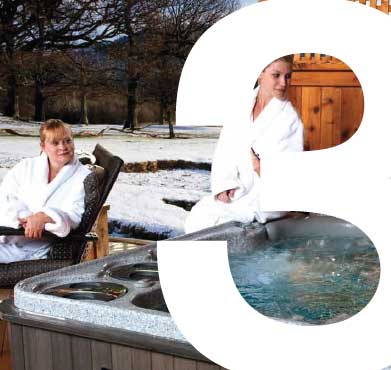Insulation
Insulation
 |
Insulation This factor is significant because of its link to energy efficiency, an important consideration for any homeowner looking to protect the planet or save money on ever-rising energy costs. First and foremost, look for a hot tub that is approved by the Commission for Environmental Co-operation (CEC), a North American body that addresses regional environmental concerns, helps prevent potential trade and environmental conflicts and promotes the effective enforcement of environmental law. Investigate how long it takes for the hot tub to pump out and filter 100 per cent of its water. The less time this takes the more energy-efficient the hot tub will be. Also look for models that use low-amperage filtration pumps. A good hardcover can also provide added insulation and energy efficiency. The industry standard is a 50 to 76-mm (2 to 3-in.) tapered cover; however, a tapered 76 to 101-mm (3 to 4-in.) cover will more effectively retain heat. Also, look for a hardcover with an insulated bumper around the folded area, as that is where you will lose most of your heat. Adjustable venting is another factor to consider. Any hot tubs that use a heat lock technology (which uses the motor’s waste heat to warm up the hot tub water during the winter) needs to be able to release some of the heat, especially in summer. Hot tubs that offer adjustable venting will allow you to vent heat in the summer and trap it in the winter. In addition to energy concerns, proper insulation will also help guard against rodents, who love a warm place to live in the winter. Make sure your hot tub has a sealed cabinet and a plastic floor to ensure these unwelcome visitors cannot take up residence. |










